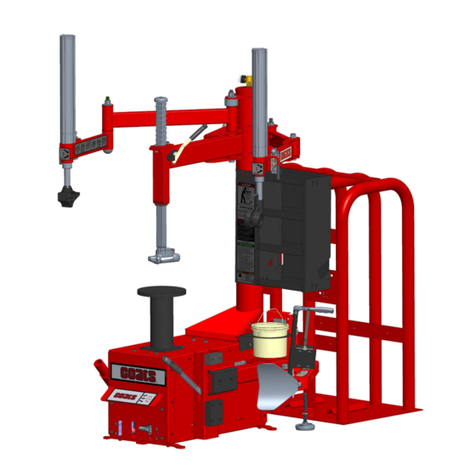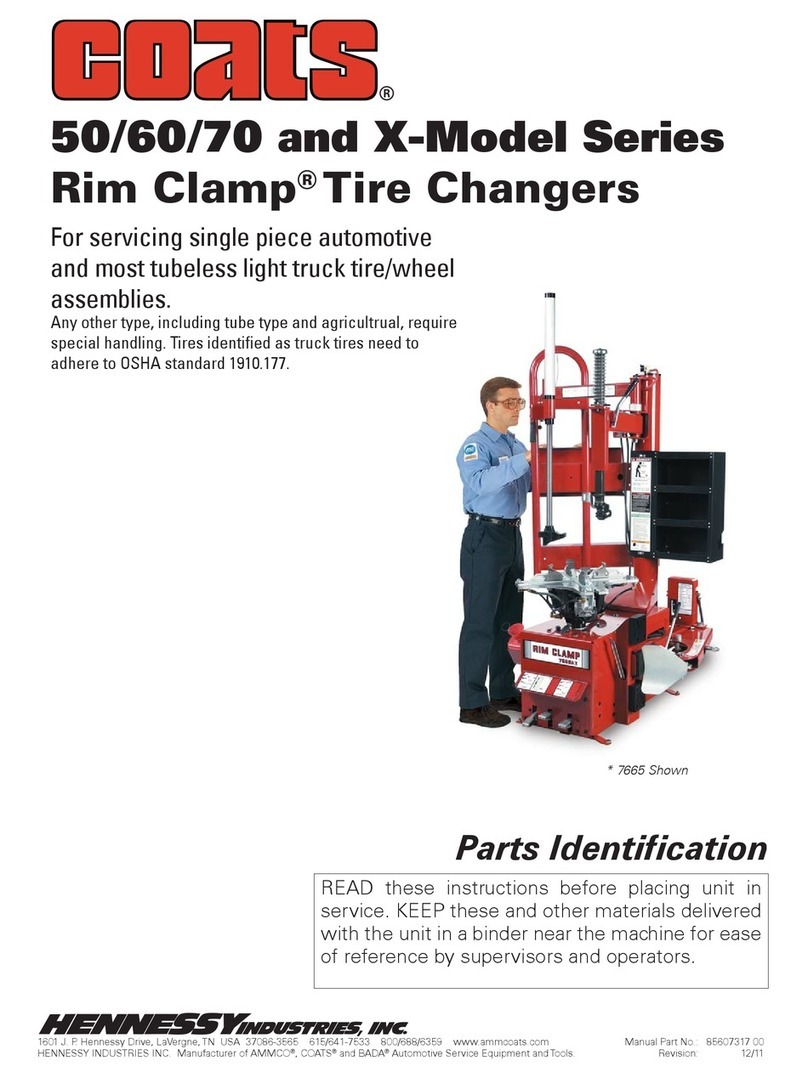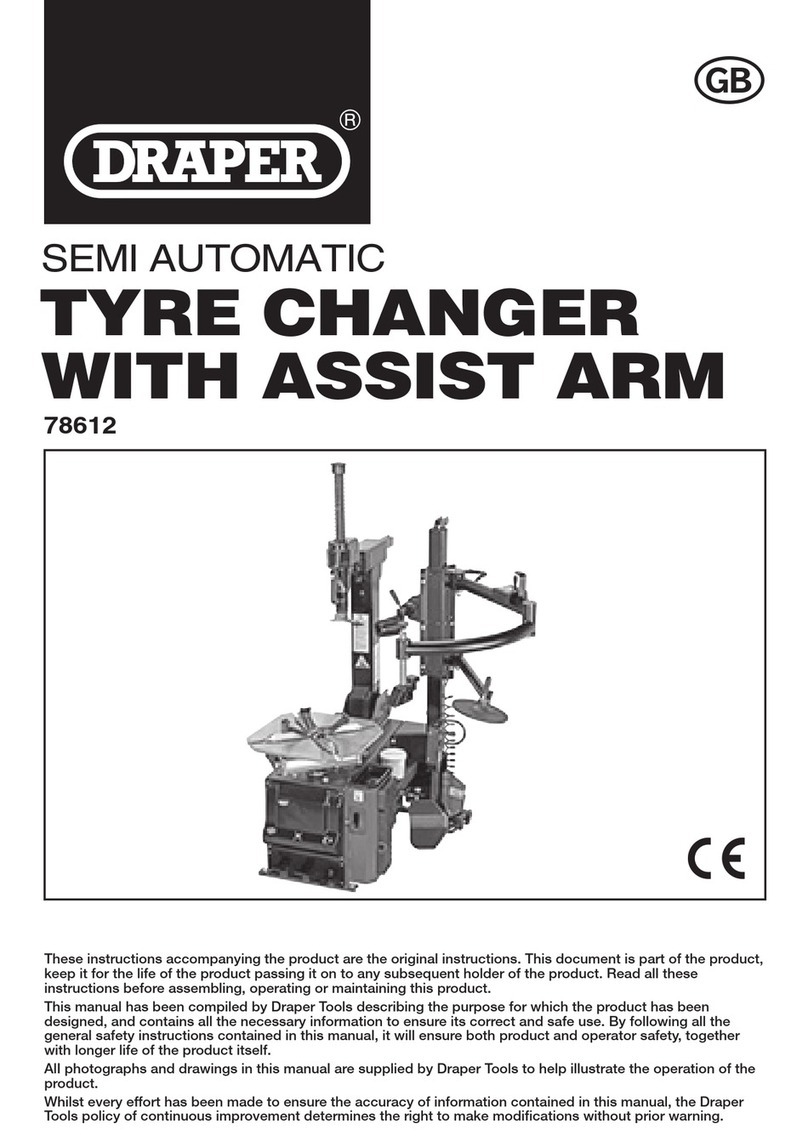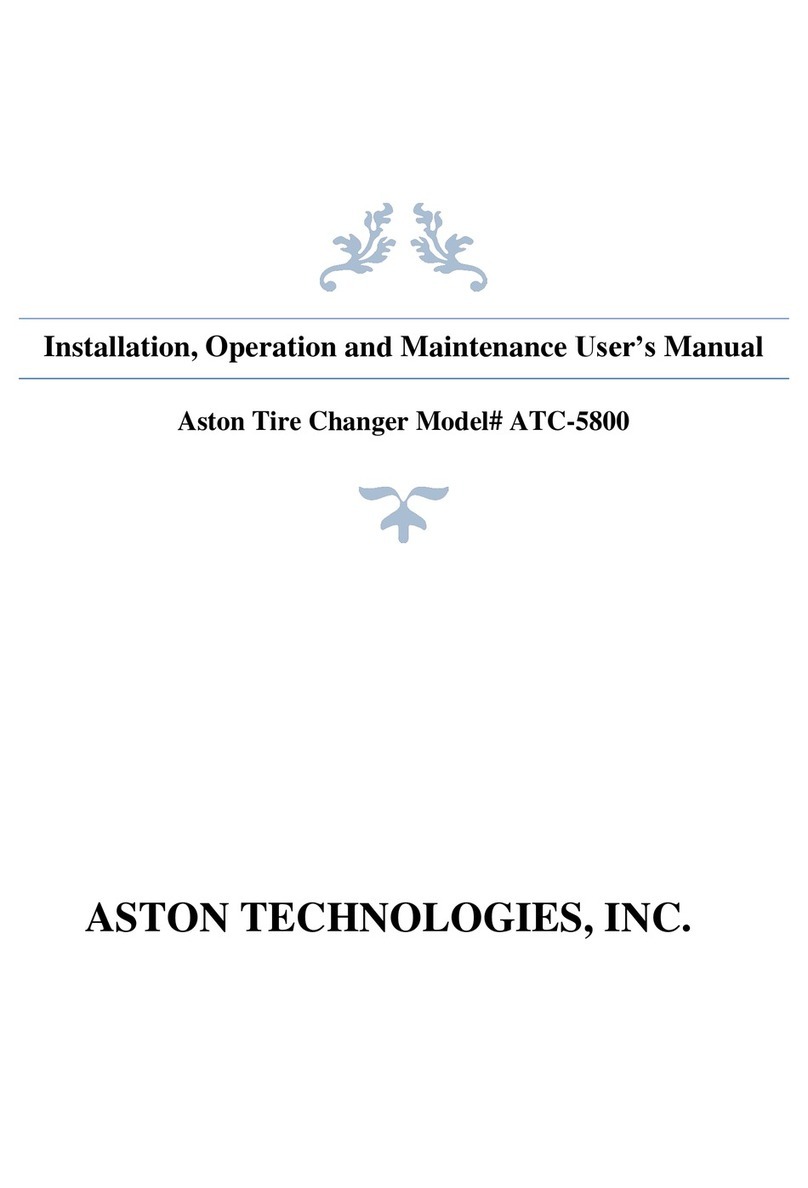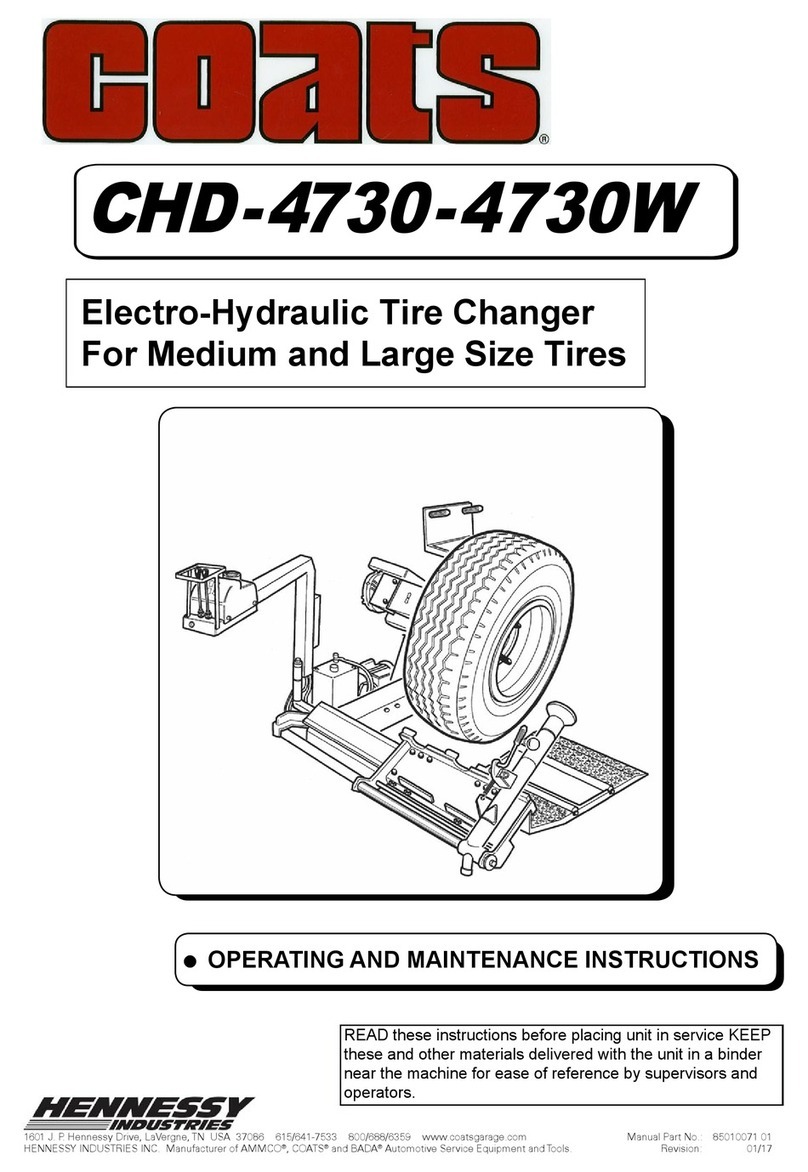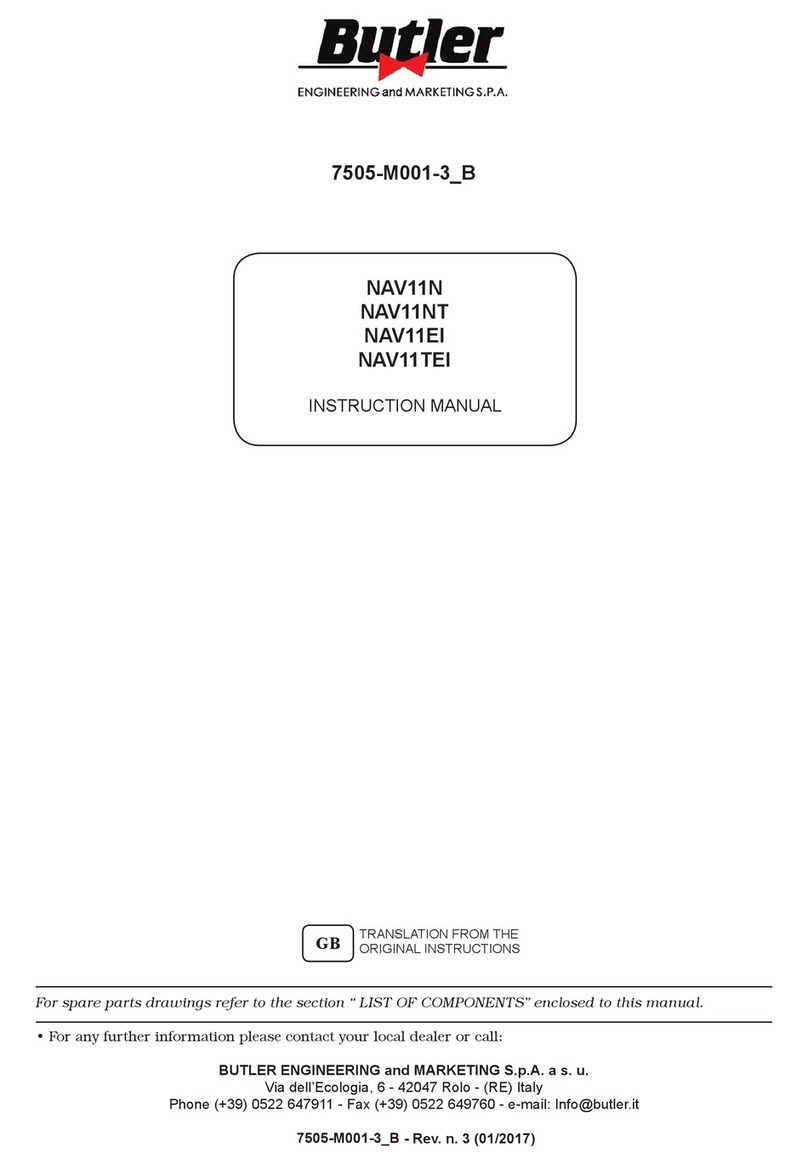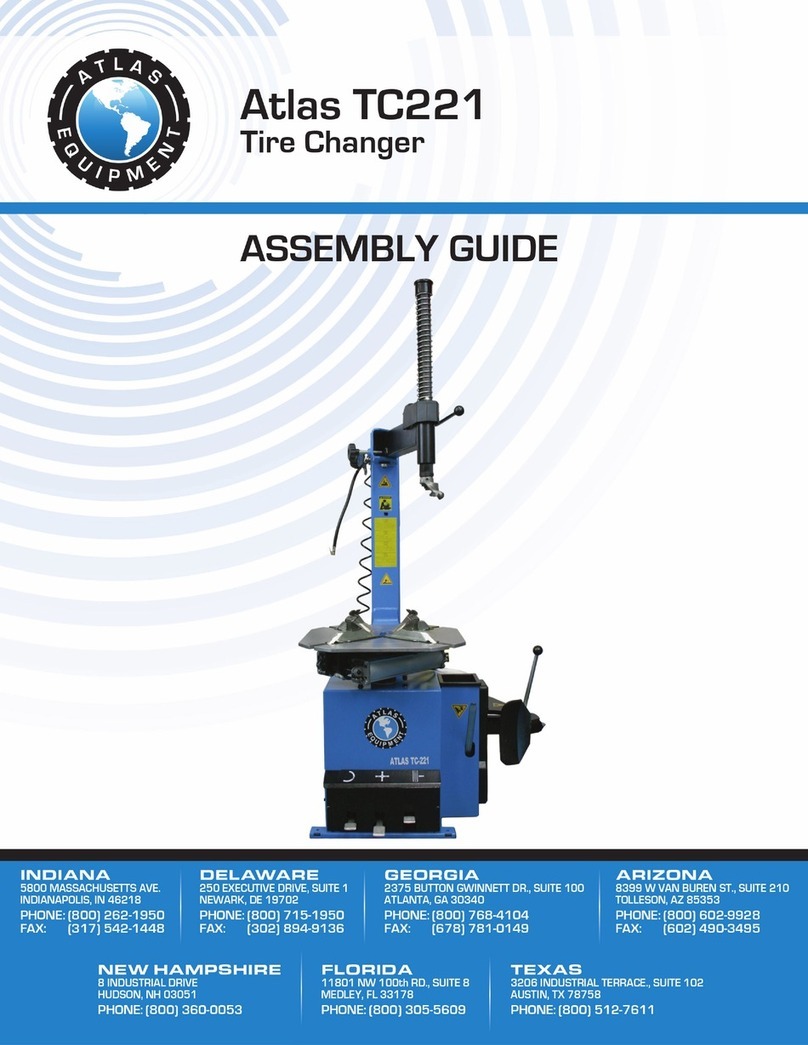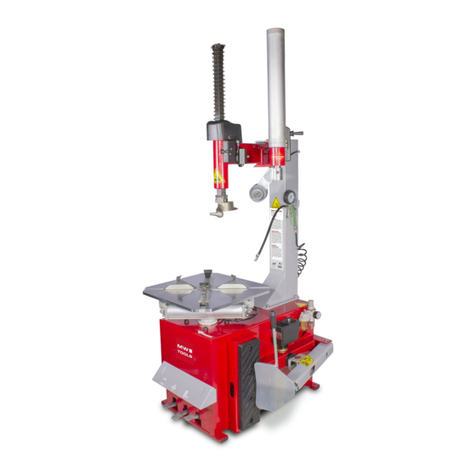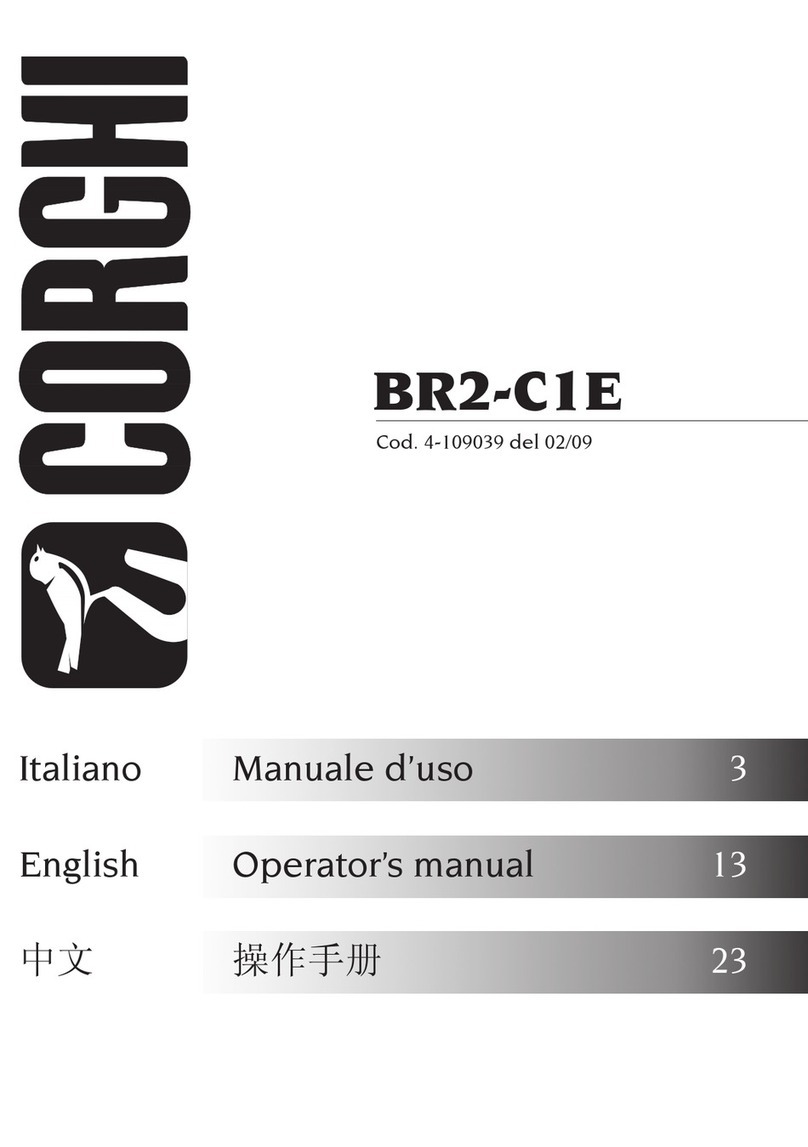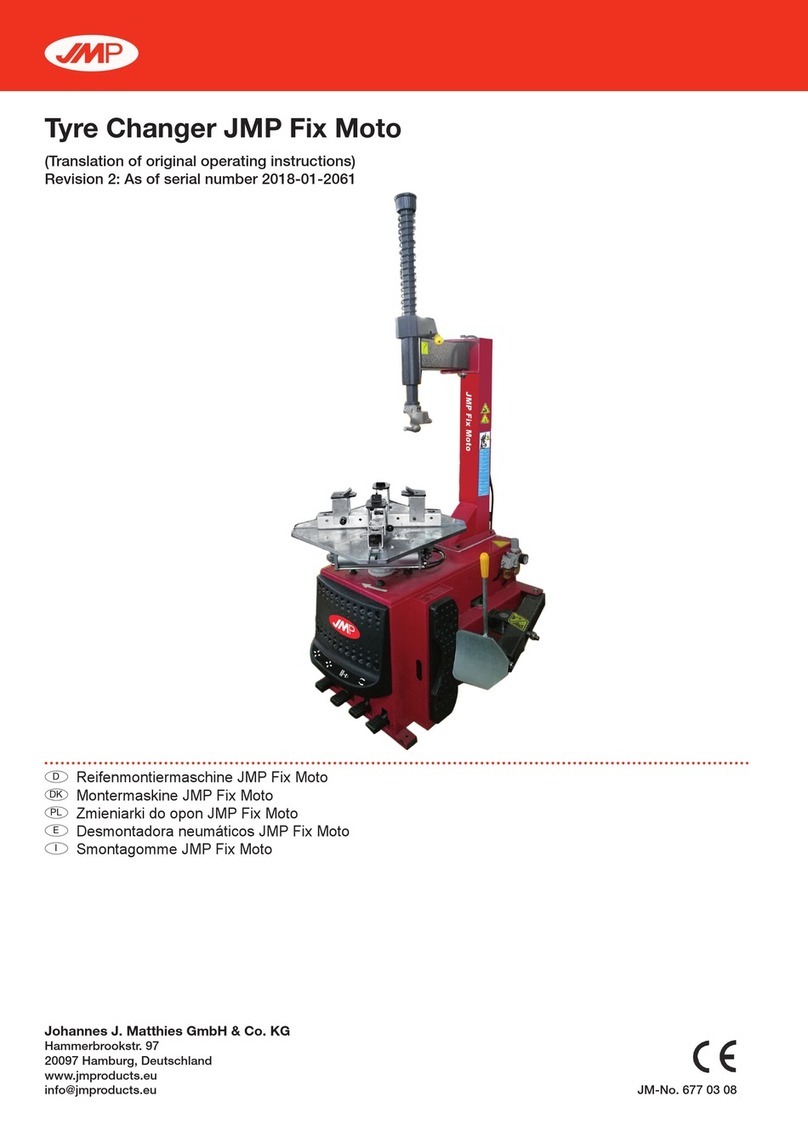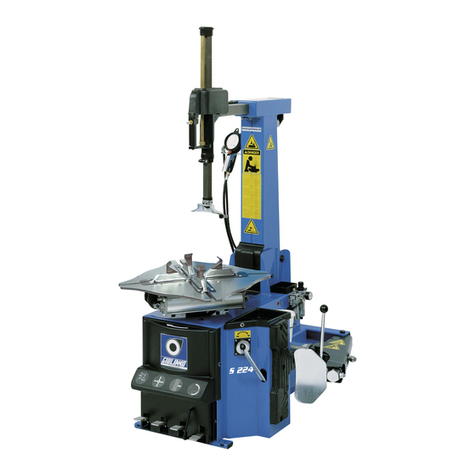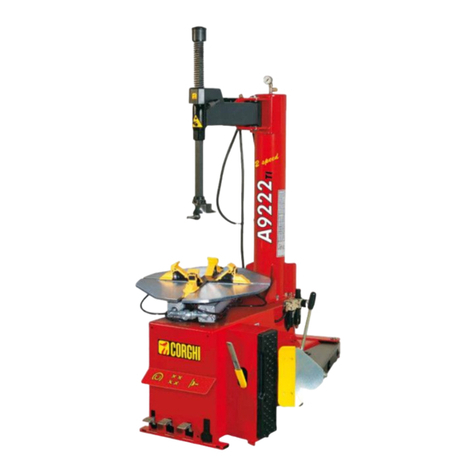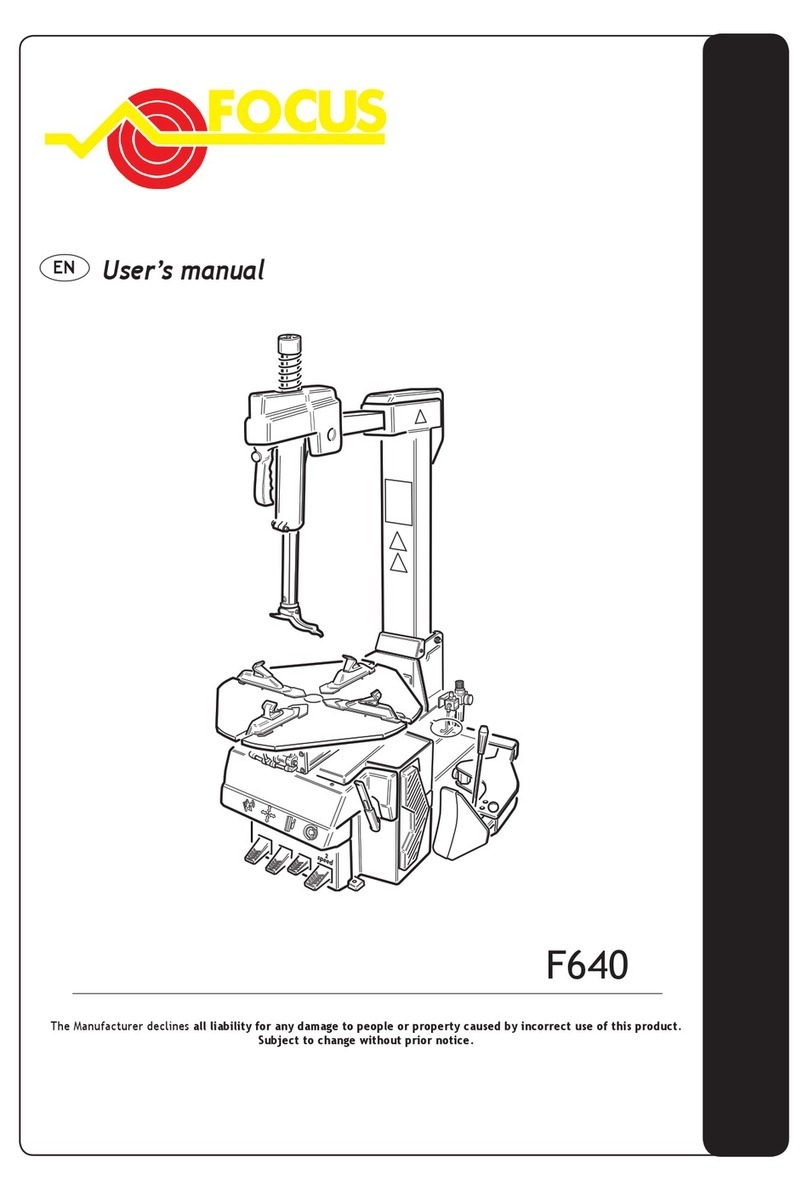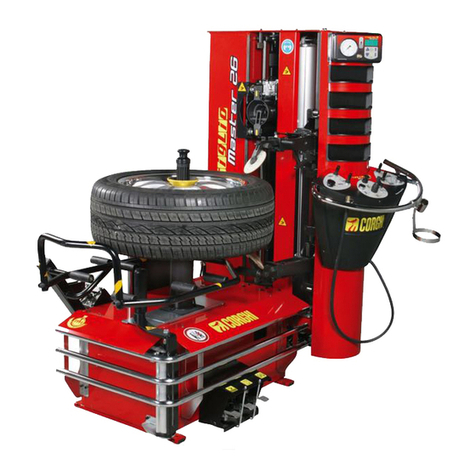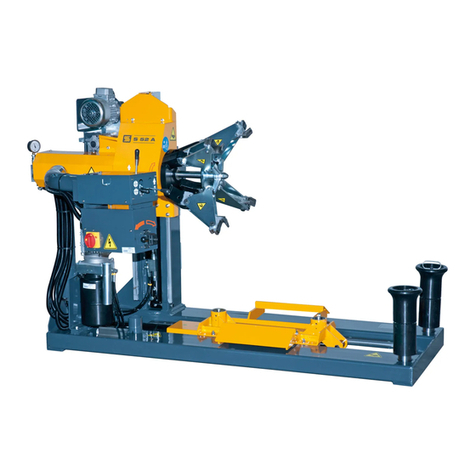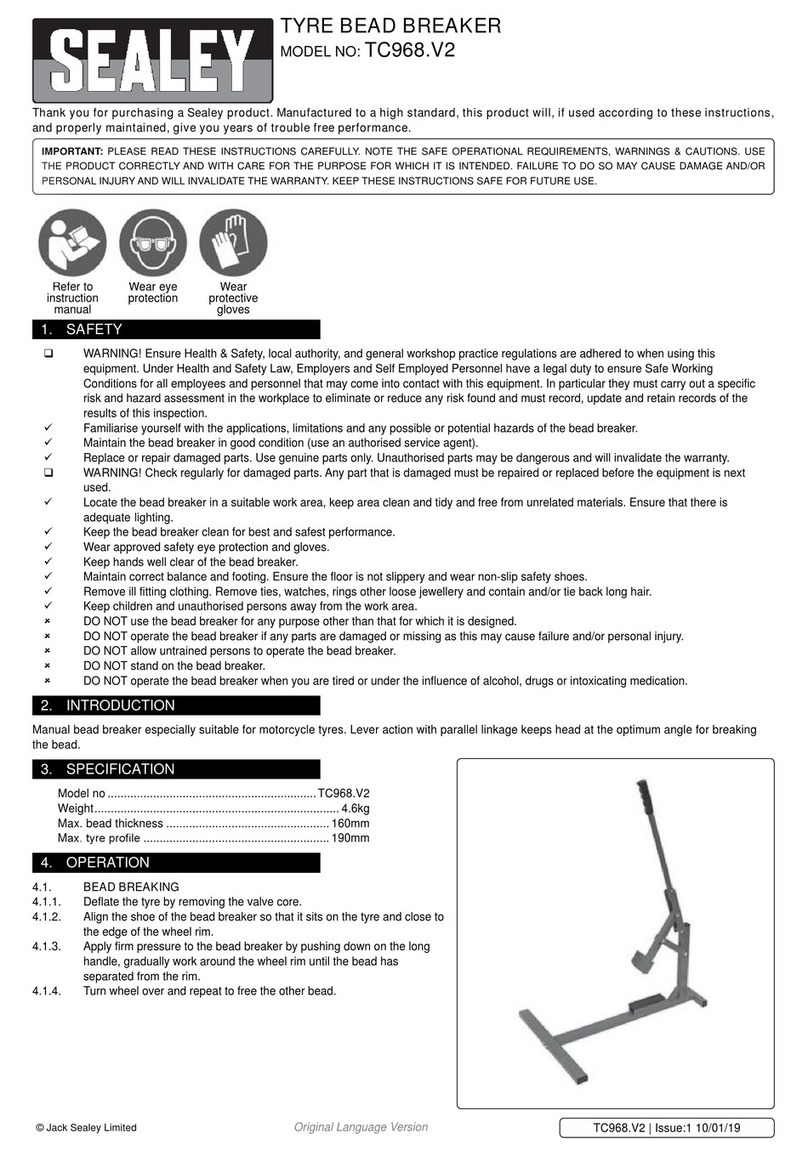
4
Keep this manual in a safe place. The manual contains valuable information regarding the safe
operation and maintenance of your equipment. The manual contains parts information that will
help to identify tire changer parts if replacement parts are needed.
The manufacturer or distributor is not responsible for any personal injury, machine damage, or
collateral damage that results from improper use of this machine. Please read and understand this
manual BEFORE you begin operation of the tire changer. Improper use of the tire changer will
void manufacturers and distributors warranty.
READ AND UNDERSTAND THIS MANUAL BEFORE ATTEMPTING
TO USE YOUR NEW TIRE CHANGER.
1) THIS TIRE CHANGER OPERATES ON COMPRESSED AIR AND ELECTRICITY.
YOU MUST DISCONNECT THE TIRE MACHINE FROM BOTH POWER SOURCES
BEFORE ATTEMPTING TO INSTALL, REPAIR, OR MAKE ADJUSTMENTS TO THE
TIRE CHANGER. COMPRESSED AIR IS STORED IN THE INFLATION TANK AND
AIR SUPPLY SYSTEM OF THE TIRE CHANGER. ALL COMPRESSED AIR MUST BE
EVACUATED FROM THE MACHINE BEFORE ANY REPAIRS CAN BE ATTEMPTED.
COMPRESSED AIR IS VERY DANGEROUS. AIR CAN BE EVACUATED FROM THE
SYSTEM BY PRESSING AND RELEASING ALL AIR CONTROL FOOT PEDALS.
THE SOUND OF ESCAPING AIR WILL CEASE AS THE COMPRESSED AIR IS
PURGED FROM THE SYSTEM. USE COMMON SENSE.
2) ALL REPAIR WORK SHOULD BE PERFORMED BY A QUALIFIED,
MECHANICALLY INCLINED PERSON. ANY COMPETENT PERSON THAT IS ABLE
TO UNDERSTAND WRITTEN AND SPOKEN (ENGLISH) INSTRUCTIONS SHOULD
BE ABLE TO INSTALL AND SERVICE THIS MACHINE. IF YOU ARE NOT
MECHANICALLY INCLINED, PLEASE EMPLOY A PERSON WITH MECHANICAL
SKILLS TO HELP INSTALL YOUR TIRE CHANGER OR MAKE ANY NECESSARY
FUTURE REPAIRS. REMEMBER TO DISCONNECT THE TIRE CHANGER FROM
ALL POWER SOURCES BEFORE MAKING ANY REPAIRS OR ADJUSTMENTS.
3) KEEP WORK AREA CLEAN AND DRY. ALLOW PLENTY OF ROOM TO INSTALL
YOUR TIRE CHANGER. MAKE SURE THAT ALL MOVING PARTS OF THE TIRE
CHANGER REMAIN UNOBSTRUCTED WHEN THE MACHINE IS IN OPERATION.
4) THE TIRE CHANGER IS TO BE USED BY PERSONS 16 YEARS OR OLDER, THAT
ARE SKILLED IN THE OPERATION OF AUTOMOTIVE SERVICE EQUIPMENT.
5) KEEP SMALL CHILDREN AWAY FROM WORK AREA. SERIOUS PERSONAL
INJURY MAY OCCUR IF THE MACHINE IS NOT OPERATED PROPERLY.
6) STORAGE OF EQUIPMENT SHOULD BE IN A DRY AREA TO INHIBIT RUST. IF
THE MACHINE IS NOT TO BE USED FOR A LONG PERIOD OF TIME. PLEASE
DISCONNECT FROM BOTH THE ELECTRICAL AND AIR SUPPLY.
7) DO NOT WEAR LOOSE FITTING CLOTHES OR JEWELRY WHEN OPERATING
YOUR TIRE CHANGER. Moving machine parts (while in operation) could become
tangled with loose clothing, jewelry, or long hair resulting in personal injury or death.
